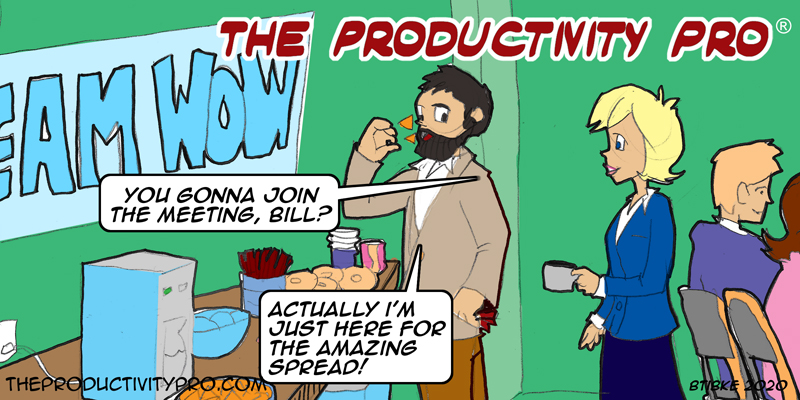
“People who know what they’re talking about don’t need PowerPoint.” – Steve Jobs, Co-Founder of Apple.
We all know that traditional meetings, while necessary and useful to some extent to make decisions, tend can be time-wasters; in some companies, they take up most of the day. Then there are the nap-inducing slide presentations, complete with lowered lighting. Whole books have been written about the shortcomings of such meetings, so I won’t belabor them here.
That said, there are some alternatives to traditional meetings that tend to be shorter and less stultifying. Some have arisen due to new technology; others need no technology at all. With the rise of the coronavirus, it just may be time for you to start exploring some of these other options. Here are just a few:
- Walking meetings. Billionaire Richard Branson is fond of these. Simply put, a walking meeting takes place as you’re walking with someone to their next destination. They’re small, intimate, and brief, so participants must make their points quickly. Plus, they’re good exercise, which you need anyway, and can take the place of minor breaks in some cases.
- Standing meetings. Instead of sitting down around a table, stand up and have your meetings. As you’d expect, standing meetings tend to be significantly shorter than sitting ones. People can’t get too comfortable standing for long periods, so they tend to keep their discussions shorter, thereby allowing more productive use of time.
- Skype meetings. While a web-conference can evolve into a traditional meeting, Skype helps you avoid this by limiting you to a relatively small number of participants. The fewer participants, the fewer points of connection, and the shorter the meeting. Plus, if necessary you can share files over Skype, and use Skype chat to emphasize points or pass notes to specific attendees that need not go to everyone.
- Instant messaging. IM apps are many and varied, but all you need is a stripped-down version that lets you shoot your messages to a small group and receive theirs. IMs are an excellent way to handle minor issues. Rather than bother with a conference room, you can stay at your desk and save travel time (even if the travel time is just a few minutes). In addition, IMs don’t necessarily require a lot of thought or response time. You can also take care of small tasks while you wait for others to respond.
- Using www.vimeo.com or www.streamspot.com, you can have a few people in the “live” location and stream it to conference rooms around the world. If you can play a YouTube video in a conference room, you can livestream. It’s a bit more complicated, however, in that it requires video equipment and an encoder. This is the technology used in graduations and leadership events around the country, and it’s the same technology we use our LEADERSHIP USA events (http://LeadershipUSA.com/events).
- Brainstorming apps. Most people seem to brainstorm better when they’re alone, rather than in groups. So rather than calling a meeting to brainstorm, use a collaboration app on the company intranet that lets participants brainstorm at their leisure and put their ideas up on a community board. Any overlapping ideas can be quickly weeded out, and if anything seems particularly useful, you can leave notes to participants to expand upon it. Trello and Asana are popular apps for this purpose.
Meeting of Minds
We may not like them much, but until we figure out how to read each other’s thoughts (which may be possible electronically!), work meetings will have their place. They remain the best way to make decisions and delegate projects; without meetings, business in any organization would soon stall. However, that doesn’t mean we have to continue using traditional meeting methods, which can waste time and money (especially when some people have to travel to attend the meeting) as well as productive activity, especially in the case of people who don’t really need to be there. The list above contains just a few ways to streamline or avoid meetings, so let us know your favorite methods.
© 2020 Laura Stack. Laura Stack, MBA, CSP, CPAE is an award-winning keynote speaker, bestselling author, and noted authority on employee and team productivity. She is the president of The Productivity Pro, Inc., a company dedicated to helping leaders increase workplace performance in high-stress environments. Stack has authored eight books, including FASTER TOGETHER: Accelerating Your Team’s Productivity (Berrett-Koehler 2018). She is a past president of the National Speakers Association, and a member of its exclusive Speaker Hall of Fame (with fewer than 175 members worldwide). Stack’s clients include Cisco Systems, Wal-Mart, and Bank of America, and she has been featured on the CBS Early Show and CNN, and in the New York Times. To have Laura Stack speak at an upcoming meeting or event, call 303-471-7401 or contact us online.


